Abstract
S-sulfonated gamma globulin (GGS), newly developed as a safe drug for intravenous use, was studied for its protective effects against some experimental infections in mice. Gamma globulin showed a good protective activity against infections due to Streptococcus pneumoniae and Escherichia coli and was moderately active against infections due to Staphylococcus aureus and Pseudomonas aeruginosa. In most cases, the potency of GGS was almost the same as that of original native gamma globulin. The duration of GGS activity in vivo was found to be comparable to that of native gamma globulin and much higher than that of pepsin-digested gamma globulin. In the control of infection due to E. coli, specific antibody was found to play a central role in the antibacterial action of GGS. When GGS was administered in combination with the antibiotics gentamicin and cefazolin for the control of infections due to S. pneumoniae or E. coli, a clear synergistic effect was observed.
Full text
PDF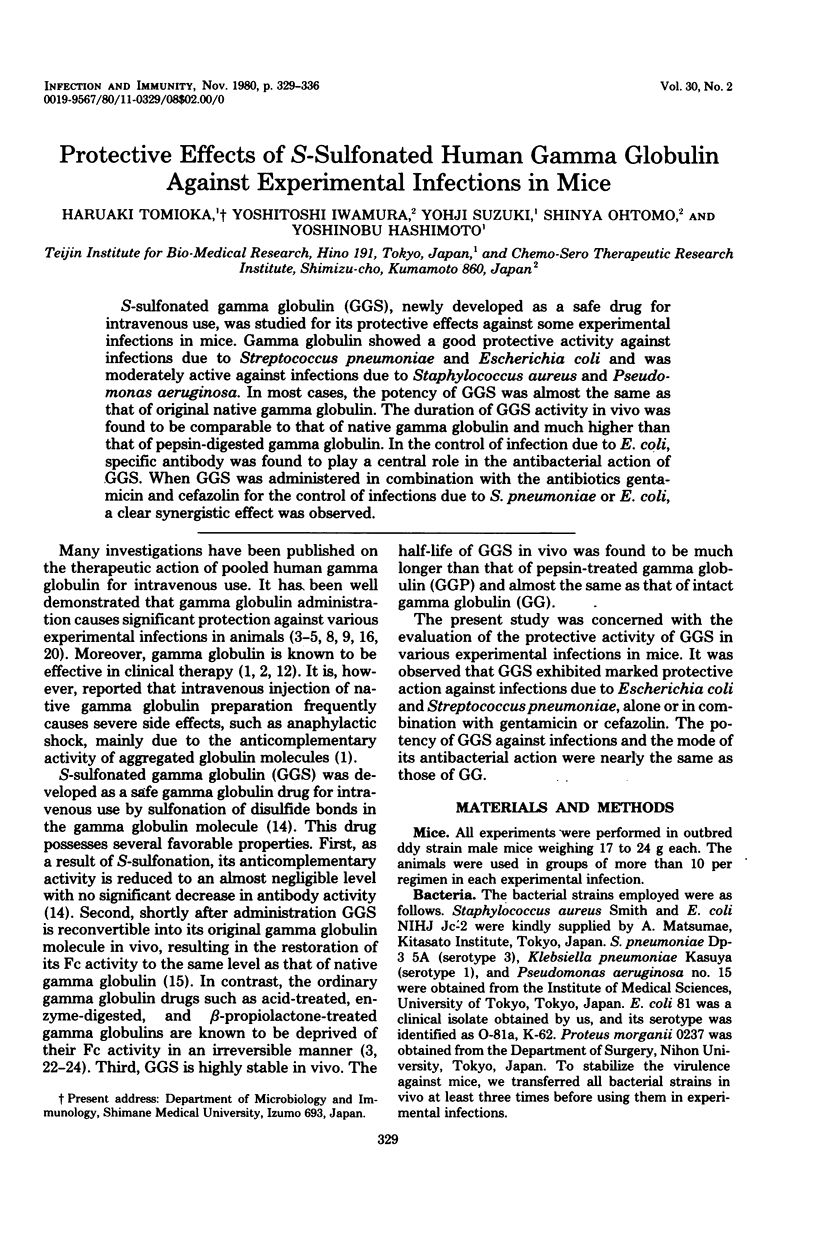

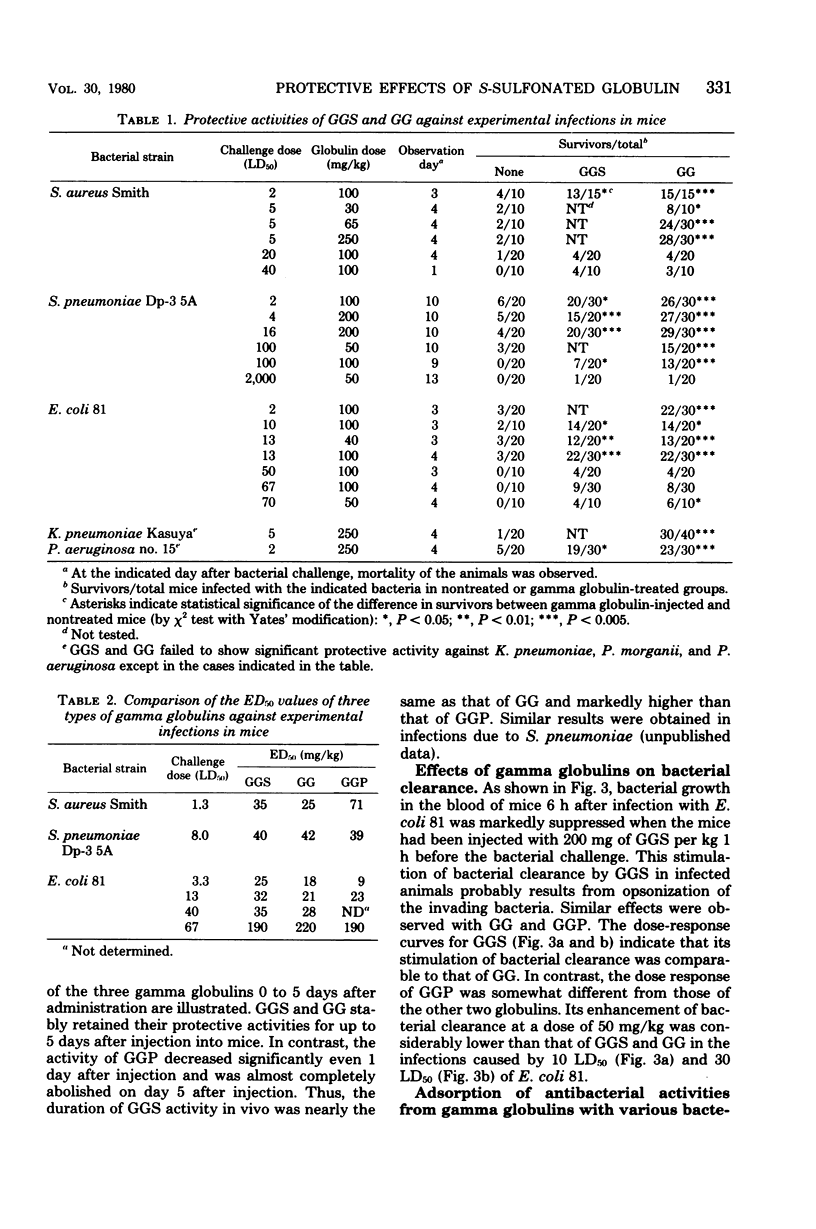
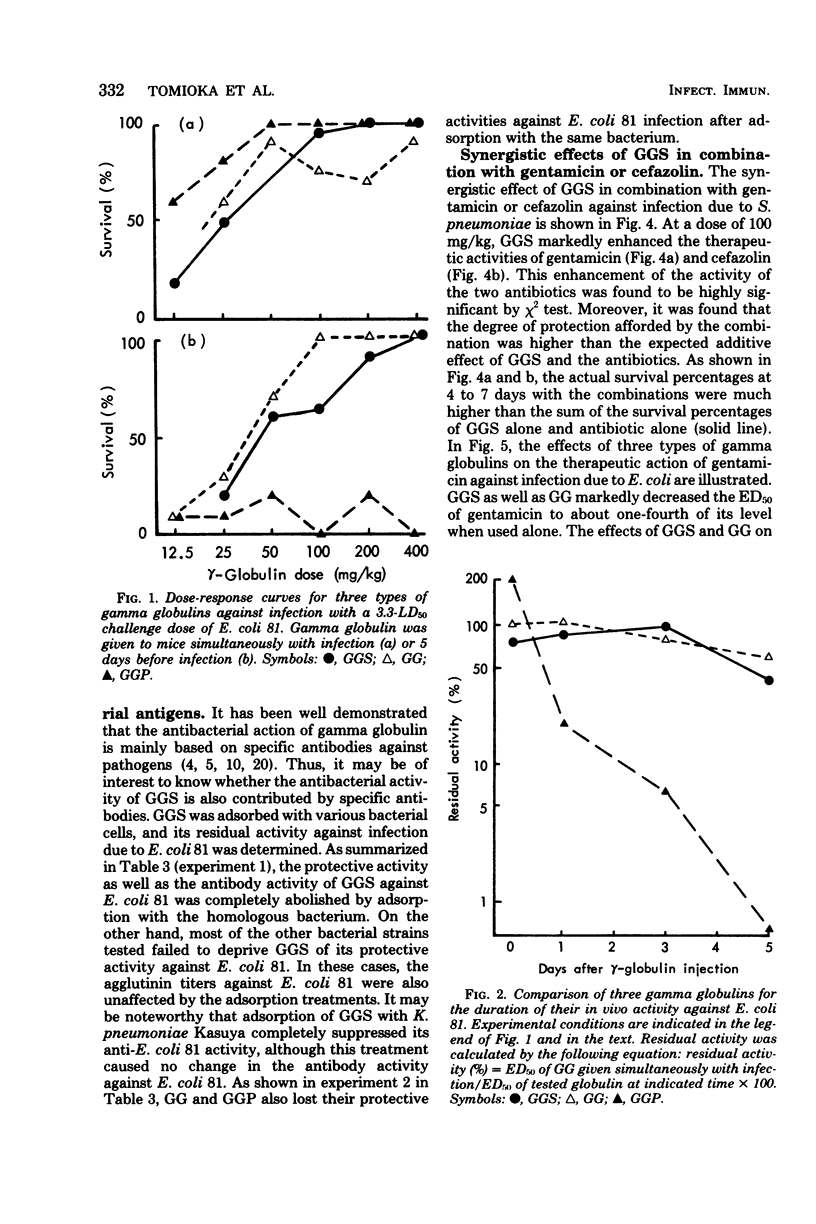
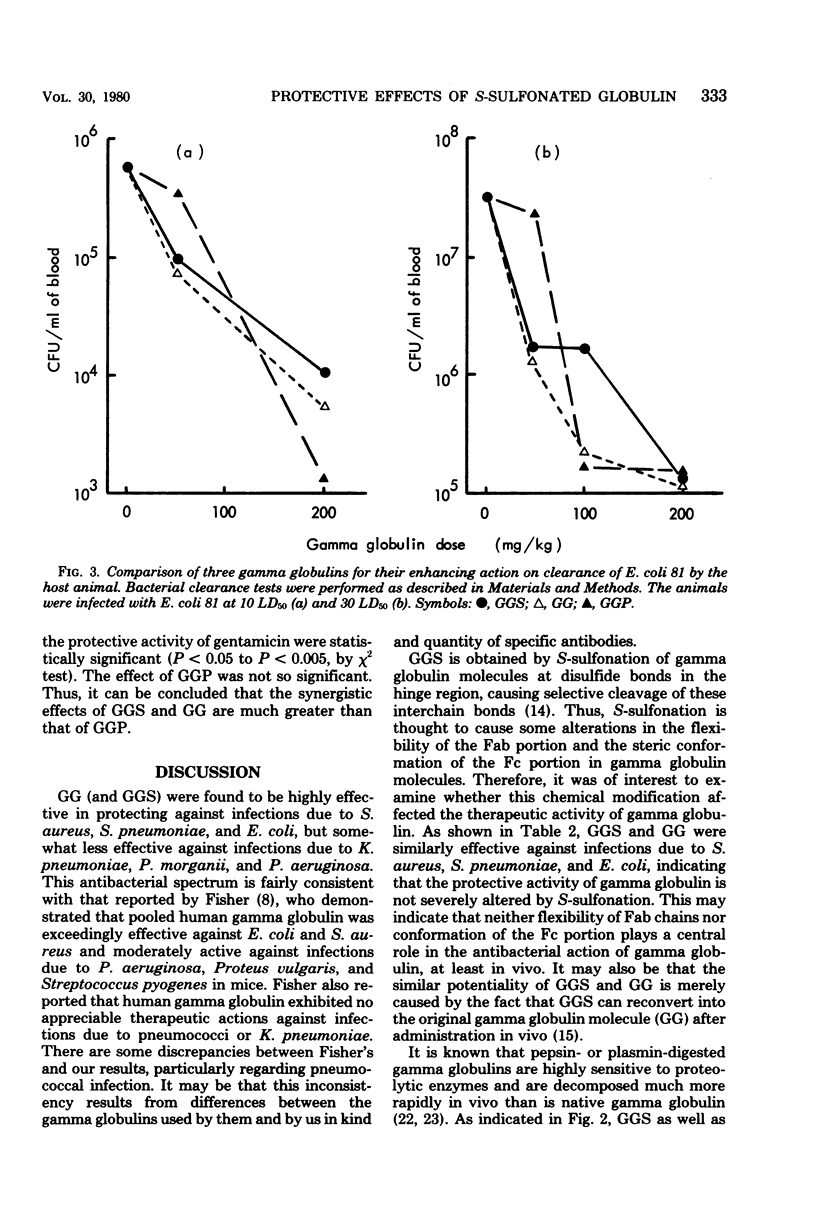
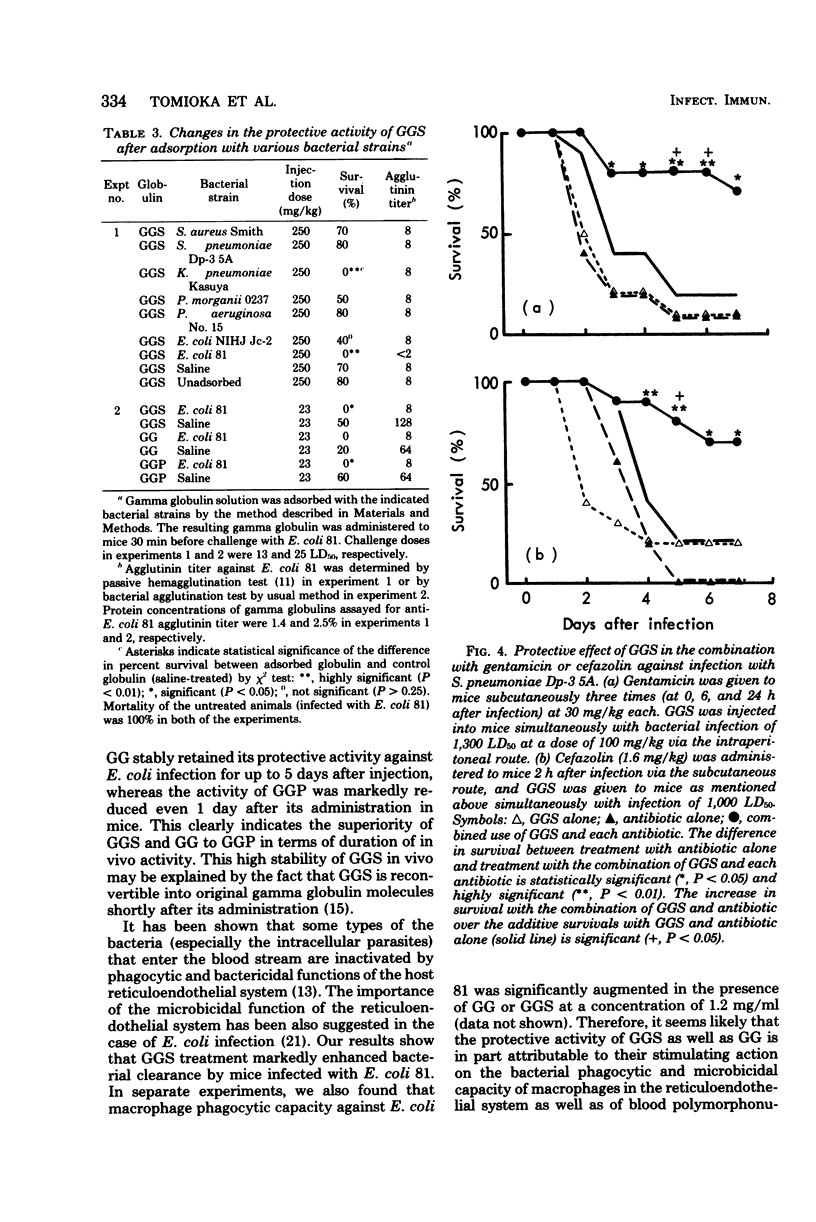

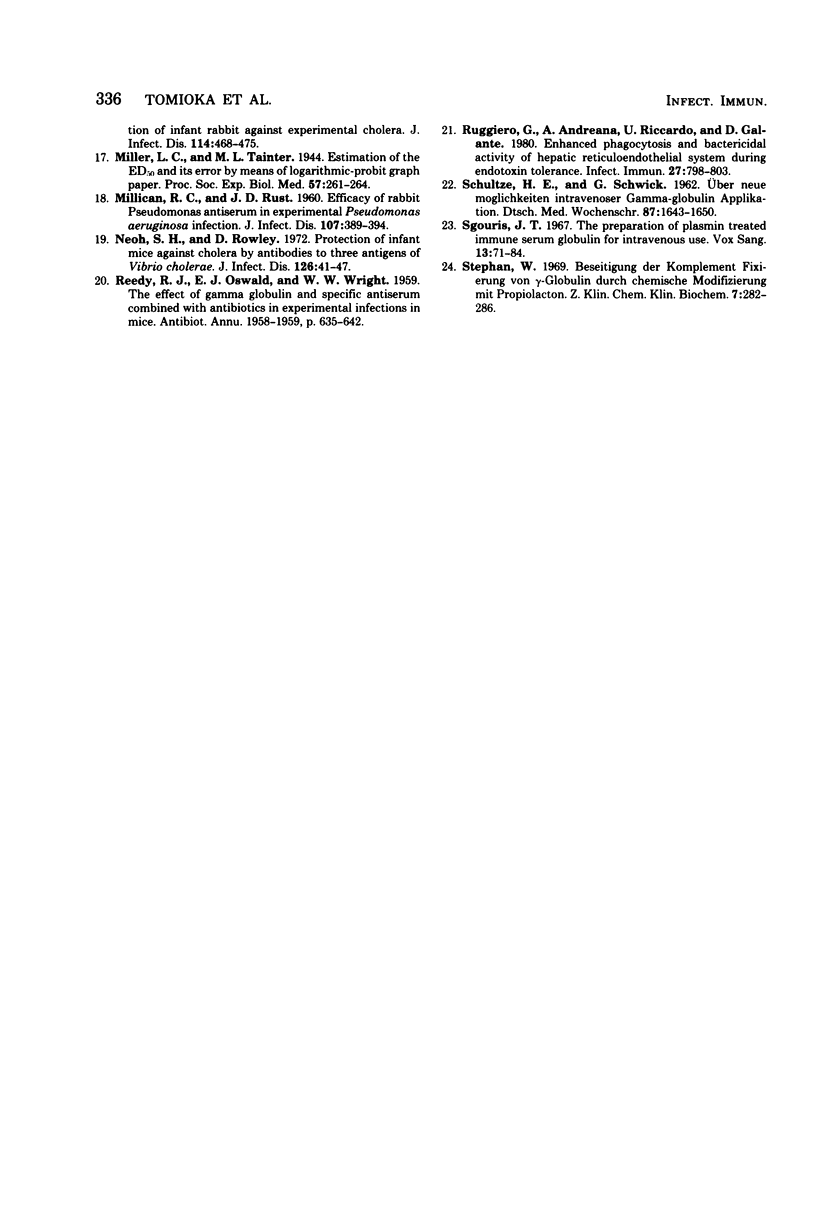
Selected References
These references are in PubMed. This may not be the complete list of references from this article.
- BARANDUN S., KISTLER P., JEUNET F., ISLIKER H. Intravenous administration of human gamma-globulin. Vox Sang. 1962;7:157–174. doi: 10.1111/j.1423-0410.1962.tb03240.x. [DOI] [PubMed] [Google Scholar]
- Barandun S., Skvaril F., Morell A. Prophylaxis and treatment of diseases by means of immunoglobulins. Monogr Allergy. 1975;9:39–60. [PubMed] [Google Scholar]
- Bass J. A., McCoy J. C. Passive immunization against experimental pseudomonas infection: correlation of protection to verder and evans "o" serotypes. Infect Immun. 1971 Jan;3(1):51–58. doi: 10.1128/iai.3.1.51-58.1971. [DOI] [PMC free article] [PubMed] [Google Scholar]
- Bjornson A. B., Michael J. G. Contribution of humoral and cellular factors to the resistance to experimental infection by Pseudomonas aeruginosa in mice. I. Interaction between immunoglobulins, heat-labile serum factors, and phagocytic cells in the killing of bacteria. Infect Immun. 1971 Oct;4(4):462–467. doi: 10.1128/iai.4.4.462-467.1971. [DOI] [PMC free article] [PubMed] [Google Scholar]
- Bjornson A. B., Michael J. G. Contribution of humoral and cellular factors to the resistance to experimental infection by Pseudomonas aeruginosa in mice. II. Opsonic, agglutinative, and protective capacities of immunoglobulin G anti-Pseudomonas antibodies. Infect Immun. 1972 May;5(5):775–782. doi: 10.1128/iai.5.5.775-782.1972. [DOI] [PMC free article] [PubMed] [Google Scholar]
- Cohen S., Becker E. L. The effect of carbamylation and amidination of rabbit gamma-G-antibody on its ability to fix complement. J Immunol. 1968 Feb;100(2):395–402. [PubMed] [Google Scholar]
- DAVIES D. A., CRUMPTON M. J., MACPHERSON I. A., HUTCHISON A. M. The adsorption of bacterial polysaccharides by erythrocytes. Immunology. 1958 Apr;1(2):157–171. [PMC free article] [PubMed] [Google Scholar]
- FISHER M. W., MANNING M. C. The specific antibody nature of the therapeutic action of gamma globulin in experimental bacterial infections in mice. Antibiot Annu. 1957;5:572–576. [PubMed] [Google Scholar]
- Fisher M. W. A polyvalent human gamma-globulin immune to Pseudomonas aeruginosa: passive protection of mice against lethal infection. J Infect Dis. 1977 Aug;136 (Suppl):S181–S185. doi: 10.1093/infdis/136.supplement.s181. [DOI] [PubMed] [Google Scholar]
- KNOUF E. G. The combined use of gamma globulin and chloramphenicol in the treatment of refractory infections; a report of ten cases. Antibiot Annu. 1957;5:585–592. [PubMed] [Google Scholar]
- MILLICAN R. C., RUST J. D. Efficacy of rabbit pseudomonas antiserum in experimental Pseudomonas aeruginosa infection. J Infect Dis. 1960 Nov-Dec;107:389–394. doi: 10.1093/infdis/107.3.389. [DOI] [PubMed] [Google Scholar]
- Mackaness G. B. The influence of immunologically committed lymphoid cells on macrophage activity in vivo. J Exp Med. 1969 May 1;129(5):973–992. doi: 10.1084/jem.129.5.973. [DOI] [PMC free article] [PubMed] [Google Scholar]
- Masuho Y., Tomibe K., Matsuzawa K., Ohtsu A. Development of an intravenous gamma-globulin with Fc activities. I. Preparation and characterization of S-sulfonated human gamma-globulin. Vox Sang. 1977;32(3):175–181. doi: 10.1111/j.1423-0410.1977.tb00622.x. [DOI] [PubMed] [Google Scholar]
- Masuho Y., Tomibe K., Watanabe T., Fukumoto Y. Development of an intravenous gamma-globulin with Fc activities. II. Reconversion of S-sulfonated human gamma-globulin into the original gamma-globulin. Vox Sang. 1977;32(5):290–295. doi: 10.1111/j.1423-0410.1977.tb00648.x. [DOI] [PubMed] [Google Scholar]
- Neoh S. H., Rowley D. Protection of infant mice against cholera by antibodies to three antigens of Vibrio cholerae. J Infect Dis. 1972 Jul;126(1):41–47. doi: 10.1093/infdis/126.1.41. [DOI] [PubMed] [Google Scholar]
- Ruggiero G., Andreana A., Utili R., Galante D. Enhanced phagocytosis and bactericidal activity of hepatic reticuloendothelial system during endotoxin tolerance. Infect Immun. 1980 Mar;27(3):798–803. doi: 10.1128/iai.27.3.798-803.1980. [DOI] [PMC free article] [PubMed] [Google Scholar]
- SCHULTZE H. E., SCHWICK G. [On new possibilities of intravenous gamma globulin administration]. Dtsch Med Wochenschr. 1962 Aug 24;87:1643–passim. doi: 10.1055/s-0028-1113997. [DOI] [PubMed] [Google Scholar]
- Sgouris J. T. The preparation of plasmin treated immune serum globulin for intravenous use. Vox Sang. 1967 Jul;13(1):71–84. [PubMed] [Google Scholar]
- Stephan W. Beseitigung der Komplementfixierung von gamma-Globulin durch chemische Modifizierung mit beta-Propiolacton. Z Klin Chem Klin Biochem. 1969 May;7(3):282–286. [PubMed] [Google Scholar]


